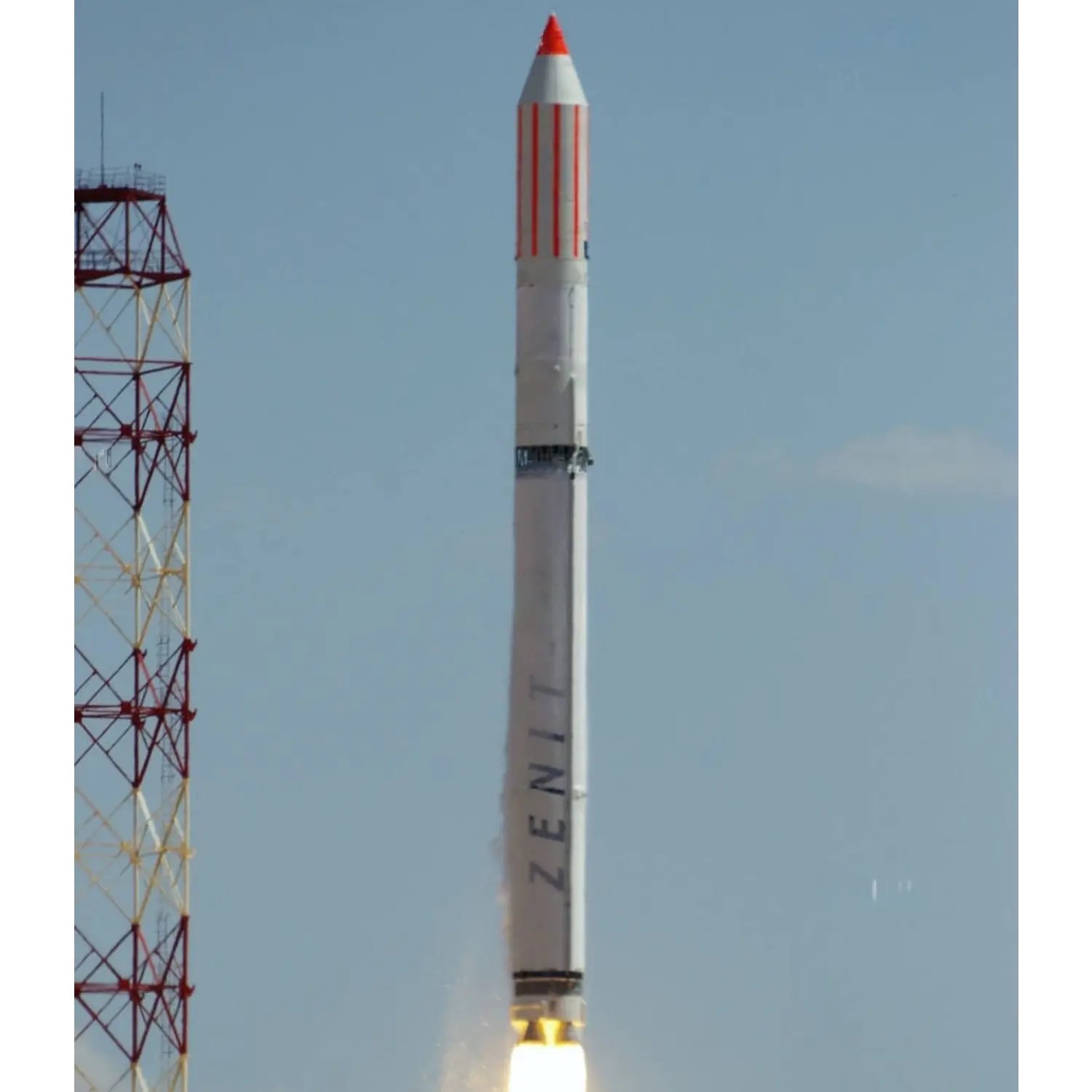Resurs-O1 n°4 & Others
Launch Success
Liftoff Time (GMT)
06:30:00
Friday July 10, 1998
Mission Details
Safir 2
Safir is a global, satellite based, bi-directional communication System for digital data transfer. The Safir service aims at non real-time exchange of data and messages to and from objects equipped with small and inexpensive User Ground Stations. Additionally, the Ground Stations can be equipped with a GPS receiver for position determination of the object. Safir-2 is an autonomous free flying communication satellit and is a further development fo Safir-1, which was a fixed payload on Resurs-O1 n°1. The most advanced technological innovation on-board Safir-2 is a Frequency Hopping telemetry system.
Low Earth Orbit
6 Payloads
20 kilograms
FASat Bravo
FASat (Fuerza Aéra de Chile Satellite)-Alfa was to become the first Chilean satellite, and has been constructed under a Technology Transfer Program between the Chilean Air Force (FACH) and Surrey Satellite Technology Ltd (SSTL) of the United Kingdom. The primary goal of the Program is to obtain for Chile the basic scientific and technological experience required to continue with more advanced steps. The purposes of the FASat-Alfa mission are to create a group of engineers with aerospace experience, to have the first Chilean satellite in orbit, and to install and operate the Mission Control Station (ECM-Santiago) in Chile
Low Earth Orbit
1 Payload
55 kilograms
Resurs-O1 n°4
Resurs-O1 is a Russian/Soviet satellite series. The program was initiated by the USSR defense ministry in 1977 with the objective of observing and monitoring natural Earth resources. The first Resurs-O1 spacecraft started operations in 1985. The program was planned for a long-term observation capability - to continue at least until 2000. Applications: observation of the state of agricultural crops, assessment of hydrological conditions, forest and tundra fires, pollution monitoring etc... The Resurs-O1 spacecraft series employed the same bus as was being used by the Meteor-3 series of the former USSR - both platforms were designed and developed by VNIIEM, Moscow. The bus is cylindrical with a diameter of 1,4 m. The spacecraft incorporates three-axis stabilization. A peak power of 1.2 kW is provided by twin 10-m span solar panels. The S/C design life is 2 years. The spacecraft launch mass is about 1800-1900 kg including a payload mass of up to 600 kg. The orbit is adjusted/maintained by ion thrusters. Originally, the Resurs-O1 series was scheduled to be replaced by the Resurs-O series, an evolutionary series with an increased payload in the time frame 2000 and beyond. However, the program was stalled at the start of the 21st century due to the tight economic situation in Russia. Resurs-O1 n°4 carried a small subpayload. ESA's IRIS 1 (Intercontinental Retrieval of Information via Satellite) payload remained intentionally attached. The objective was to provide a low-cost, worldwide electronic mail commercial service.
Sun-Synchronous Orbit
1 Payload
1,900 kilograms
TMSat 1
TMSat 1 (Thai Micro-Satellite), in October 1998 renamed Thai-Paht, was the first Thai Microsatellite launched for Mahanikorn University in Bangkok. It was launched and operated in Low Earth Orbit, and was constructed by Thai engineers with engineers at Surrey Satellite Technology Ltd. at the University of Surrey in the United Kingdom. TMSAT is also the name of a company that Mahanakorn University of Technology (MUT) and Thai Satellite Communication are investing in, in order to develop satellite technology in Thailand.
Low Earth Orbit
1 Payload
55 kilograms
WESTPAC-1
WESTPAC 1 (Western Pacific Laser Tracking Network) is a small, passive laser ranging satellite for geodetic measurements. At the Western Pacific Laser Tracking Network Executive meeting in Moscow on 2 December 1995, it was announced that Electro Optic Systems (EOS) had entered into a joint project with the Russian Space Agency to construct and launch a new SLR satellite (WESTPAC-1, formely known as WPLTN-1) designed to overcome the limitations of all present targets in relation to millimeter geodesy. Initially, this satellite was referred to as WPLTN-1. It is currently designated WESTPAC-1 and very similar in design to GFZ-1.
Low Earth Orbit
1 Payload
24 kilograms
Techsat 1B
Techsat (Technology Satellite) or Gurwin were microsatellites built by students of the Technion (Israel Institute of Technology) institute at Haifa. The satellites were of cubic shape with a size of 445 mm × 445 mm × 445 mm. They were three-axis stabilized, using a momentum wheel and three magnetorquers as actuators, and a three-axis magnetometer as attitude sensor. They were powered by thin-film photovoltaic solar cells which were mounted on four sides of the six outer aluminum panels and provided 20 W. A NiCd battery is provided for eclipse operations. The fifth panel, pointing toward Earth, includes antennas, a retroreflector, a UV spectro radiometer (OM-2) and an imaging camera. When 3-axis stabilized, the satellite would have its sixth panel unlit; it is not exposed to the sun and therefore does not include any solar cells. The satellite featured a digital store and forward multi-user system, compatible with existing store and forward facilities already in use on microsatellites used by the international amateur radio electronic community. The satellite total mass was 48 kg, with the combined payload mass being 6.6 kg. The design life was one year.
Low Earth Orbit
1 Payload
48 kilograms
Launch Site
Stats
Zenit
29th
Mission
1st
Mission of 1998
1998
44th
Orbital launch attempt

